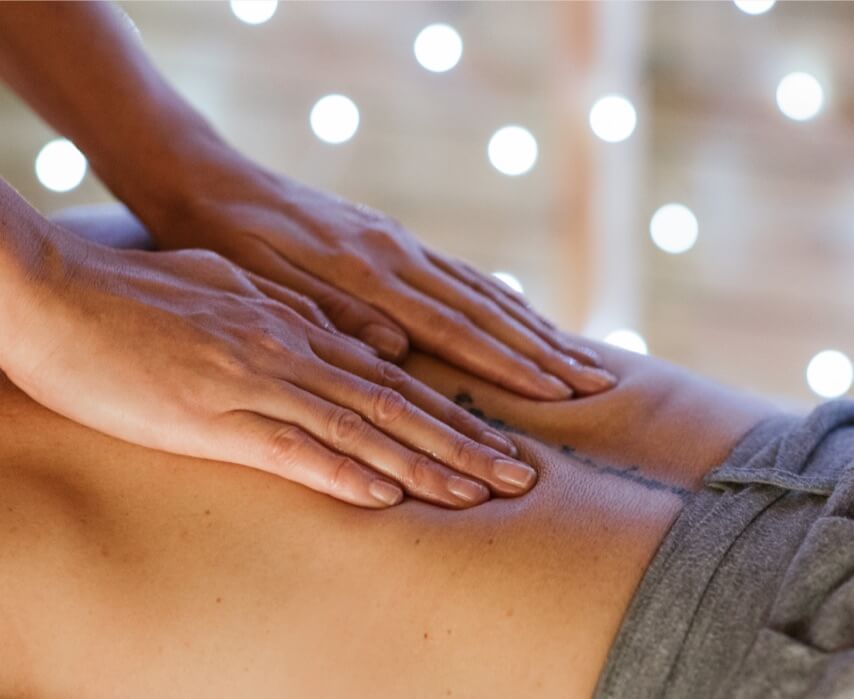Thai massage, a traditional healing practice originating from Thailand, has gained popularity worldwide for its unique combination of physical manipulation, stretching, and energy work. This article explores the origins, benefits, process, and comparisons of Thai massage, highlighting its potential for promoting wellness and relaxation.
1. Introduction
In recent years, Thai massage has emerged as a sought-after therapy that offers a holistic approach to healing and well-being. Combining elements of acupressure, yoga-like stretching, and Ayurvedic principles, Thai massage aims to balance the body’s energy pathways, release tension, and enhance flexibility. Let’s delve into the details of this ancient practice and discover its numerous benefits.
2. What is Thai Massage?
2.1 Origins and History
Thai massage, also known as Nuad Bo-Rarn, has its roots in ancient Thai healing traditions. Developed over 2,500 years ago, it draws influences from Indian Ayurvedic practices, Chinese medicine, and traditional Thai folk medicine. It was initially practiced by Buddhist monks as a form of spiritual healing and meditation. Over time, Thai massage techniques have been refined and passed down through generations, becoming an integral part of Thai culture.
2.2 Principles and Techniques
At its core, Thai massage is based on the concept of energy lines, known as Sen lines, which run through the body. Practitioners apply rhythmic pressure along these lines using their hands, thumbs, elbows, and feet, while also incorporating stretching and assisted yoga-like movements. The combination of pressure and stretching helps stimulate the flow of energy, relieve muscular tension, and promote overall relaxation and well-being.
3. Benefits of Thai Massage
Thai massage offers a wide range of benefits for both the body and mind. Let’s explore some of its notable advantages:
3.1 Physical Benefits
Thai massage can improve blood circulation, boost lymphatic drainage, and enhance the body’s natural detoxification process. The deep stretches and pressure applied during the massage help relieve muscle tension, reduce stiffness, and improve flexibility. It can also alleviate chronic pain, promote better posture, and enhance the body’s overall range of motion. Additionally, Thai massage has been found to stimulate the release of endorphins, natural pain-relieving and mood-boosting hormones, leading to a sense of relaxation and well-being.
3.2 Mental and Emotional Benefits
Beyond the physical advantages, Thai massage also offers numerous mental and emotional benefits. The rhythmic movements and focused pressure during the massage can help calm the mind, reduce anxiety, and alleviate stress. It promotes a state of deep relaxation, allowing individuals to experience a sense of tranquility and inner peace. Thai massage has even been known to enhance mental clarity, improve sleep quality, and boost overall emotional well-being.
4. Thai Massage Process
To fully understand the essence of Thai massage, it’s important to familiarize oneself with the process involved. Here are the key aspects of a typical Thai massage session:
4.1 Preparation and Environment
Before the massage begins, the therapist and the client engage in a brief discussion to determine the client’s specific needs and any existing health conditions. The massage is typically performed on a comfortable mat or a firm yet cushioned surface on the floor. The ambiance is carefully set with soft lighting, soothing music, and a calming atmosphere to enhance relaxation and create a safe space for healing.
4.2 Positions and Movements
During a Thai massage session, the client remains fully clothed in loose, comfortable attire. Unlike other forms of massage, Thai massage does not involve the use of oils or lotions. The practitioner utilizes their hands, thumbs, elbows, and feet to apply pressure and perform a series of stretching movements. The client is guided through various positions, including lying on their back, stomach, side, and sitting positions, allowing for comprehensive treatment of the entire body.
4.3 Pressure Points and Stretching
A distinctive feature of Thai massage is the focus on specific pressure points along the body’s energy lines. The therapist applies rhythmic pressure with their thumbs, palms, and fingers to these points, aiming to release blockages and restore energy flow. The massage also incorporates gentle rocking, rhythmic compression, and deep stretching movements to further relax the muscles and improve flexibility.
5. Thai Massage for Wellness
Thai massage has been widely regarded as an effective therapeutic modality for promoting overall wellness. Let’s explore some specific areas where Thai massage can be beneficial:
5.1 Stress Relief
In today’s fast-paced world, stress has become a common issue. Thai massage offers an excellent method to unwind and alleviate the physical and mental toll of stress. The combination of deep pressure, stretching, and meditative aspects of the massage can significantly reduce stress levels, induce deep relaxation, and provide a much-needed break from the demands of everyday life.
5.2 Pain Management
For individuals dealing with chronic pain conditions, Thai massage can offer relief and comfort. The targeted pressure applied during the massage helps reduce muscle tension and inflammation, providing respite from chronic pain symptoms. Thai massage has shown promising results in managing conditions such as back pain, neck and shoulder tension, headaches, and even conditions like fibromyalgia.
5.3 Improved Flexibility and Range of Motion
With its emphasis on stretching and gentle movements, Thai massage can greatly improve flexibility and range of motion. The therapist uses their hands, feet, and body weight to assist in stretching the client’s muscles, helping to lengthen tight muscles, improve joint mobility, and increase overall flexibility. This enhanced flexibility not only contributes to better physical performance but also reduces the risk of injuries.
6. Thai Massage vs. Other Massage Techniques
While there are various massage techniques available, Thai massage stands out for its unique approach. Let’s compare Thai massage with two popular massage techniques to understand its distinctive features:
6.1 Thai Massage vs. Swedish Massage
Swedish massage, also known as classic massage, focuses on long, flowing strokes, kneading, and circular movements to promote relaxation and improve circulation. In contrast, Thai massage combines deep pressure, stretching, and yoga-like movements to target energy lines and release muscle tension. While Swedish massage primarily works on the muscles, Thai massage encompasses the body, mind, and energy flow, providing a more holistic healing experience.
6.2 Thai Massage vs. Shiatsu
Shiatsu is a Japanese massage technique that utilizes finger pressure along specific points on the body to stimulate energy flow and restore balance. Like Thai massage, Shiatsu also draws inspiration from traditional Chinese medicine. However, Thai massage incorporates more stretching and movement, while Shiatsu focuses mainly on pressure points. Thai massage involves active participation from the client through assisted stretches, whereas Shiatsu is a more passive experience.
7. Precautions and Contraindications
While Thai massage is generally safe and suitable for most individuals, there are some precautions and contraindications to consider:
7.1 Health Conditions and Risks
Certain health conditions such as fractures, open wounds, infectious skin diseases, or recent surgeries may require modifications or even the avoidance of Thai massage. It is important to inform the therapist about any pre-existing health conditions, allergies, or injuries to ensure a safe and tailored experience. If you have any concerns or doubts, consult with your healthcare provider before undergoing a Thai massage.
7.2 Pregnancy and Thai Massage
For pregnant women, Thai massage can provide relief from common discomforts associated with pregnancy, but it should be approached with caution. It is crucial to seek the expertise of a therapist experienced in prenatal massage and ensure they are aware of your stage of pregnancy. Certain positions and techniques may need to be modified or avoided altogether to ensure the safety of both the mother and the baby.
8. Conclusion
Thai massage is a holistic and time-honored healing practice that offers numerous benefits for the body, mind, and spirit. By combining rhythmic pressure, stretching, and energy work, Thai massage promotes relaxation, relieves muscular tension, and enhances overall well-being. Whether you seek stress relief, pain management, or improved flexibility, Thai massage provides a rejuvenating experience that nurtures both the body and the mind.
Our team of Thai lady masseurs in Oppa Spa & Beauty Center is comprised of highly skilled and experienced professionals who are dedicated to providing exceptional Thai massage experiences. With extensive training and a deep understanding of the art of Thai massage, our masseurs bring a wealth of knowledge and expertise to every session. They have honed their skills over years of practice, ensuring that each client receives a personalized and therapeutic treatment tailored to their specific needs. Our Thai lady masseurs possess a profound understanding of the body’s energy pathways and are adept at applying precise pressure and performing stretches to release tension, improve flexibility, and promote overall well-being. Rest assured that you will be in capable hands as our qualified masseurs work their magic to transport you to a state of deep relaxation and rejuvenation.

